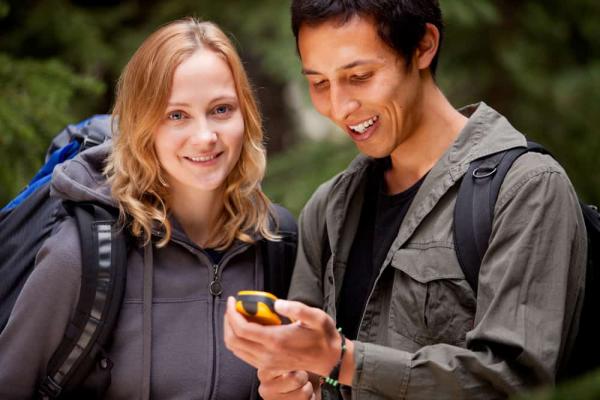
Geocaching (or letterboxing) is an outdoor recreational activity you can do with your children this summer. It is a free, real-world treasure hunt that uses clues, a compass, smartphone or GPS coordinates to locate different hidden containers. You can do it alone with your child, or in small groups, and is perfect for the summer season.
As you locate each container, participants can log in with their code name on a paper inside or stamp their mark with a rubber stamp. A larger box might contain a small toy or trinket for trading. You can even get a Geocaching Merit Badge in Boy Scouting where they learn the skills of orienteering and puzzle solving. The official Geocaching website is a comprehensive site that offers detailed information about established geocache locations and how to search for them.
Using an established Geocache
There are 1.75 million geocaching adventures waiting for you to explore. Some of them are super cool and hard to find. Download an app for your iPhone or Android. Letterboxes are also a variation of this type of treasure hunt and more information can be found at this website.
Making your own
There are myriad ways to make your own geocache or letterbox adventure in your own backyard. Think of an educational treasure hunt in any variation you'd like. Children can collect items at each site, like postcards, prizes, candy, or just another clue for the next site. It's more fun if each person has something to do when they find the letterbox, so I'd suggest letting each child choose a rubber stamp to stamp each time.
Another variation is to give each child their own "passport" that looks like a real passport book, where they stamp each of their pages that corresponds to each letterbox site. The beauty of doing your own is being able to tailor the clues and difficulty to the age group of the children. It can be done over the summer, doing one box a week, or finding them all in one day. Hide them just prior to the search so they aren't "taken" by other people.
I like to focus my educational letterbox adventures depending on where they are hidden. You can choose to conduct one throughout your town, at different landmarks, at a park, or throughout a building. Each box might contain information about something at that site, such as a statue or historical landmark. Be sure to get permission if you want to hide the letterboxes inside a building and take each completed box with you. If you do an outdoor adventure, each box might contain information about the types of trees, flowers, natural landmarks, or plants as an educational botanical lesson.
One summer, we did a letterbox treasure hunt for a family reunion. While we were at a city park one afternoon, I hid small boxes around the park. Inside each box was a photograph of a family ancestor, a short story or brief biography of that person, and a clue for the next site. I gave instructions along with a "Passport to Ancestors" booklet to each extended family and a beginning clue where the first box could be found. Each family went around the park at their own pace during that day and learned more about their family history, stamped their passport, and had a fun, memorable adventure.

